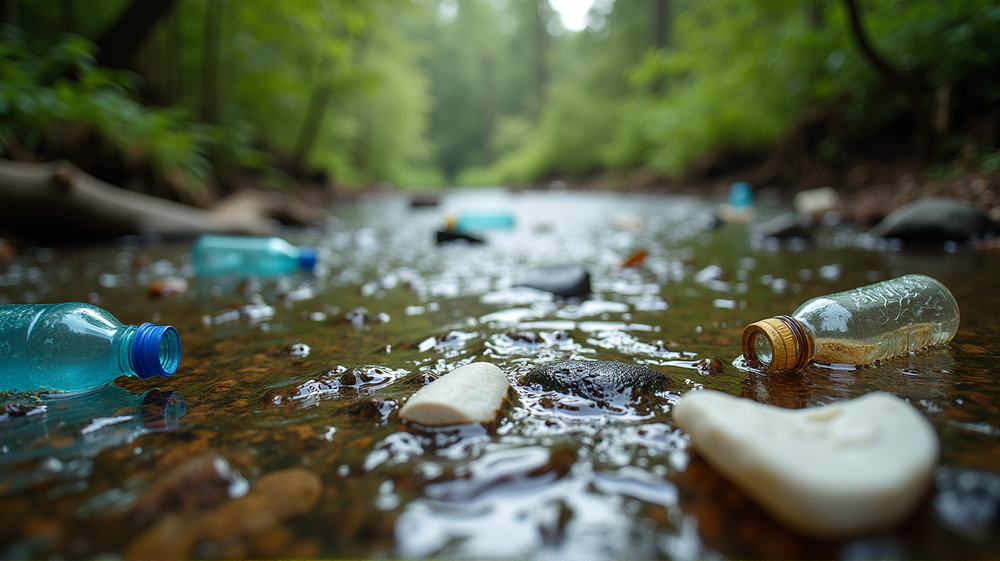In the serene waters of North Carolina, a silent threat lurks beneath the surface. The flowing streams, once symbols of pure beauty and tranquility, are now home to a persistent and prolific polluter: single-use plastics. According to North Carolina Health News, a recent comprehensive study reveals that despite ongoing cleanup efforts and the existing policy challenges, an overwhelming 96% of litter removed from the state’s streams is composed of plastics. Let’s dive into the details.
The Plastic Predicament
The study, led by Dr. Nancy Lauer and published in Community Science, involved a tireless three-year initiative where waterkeeper organizations and volunteers meticulously cleaned and documented litter from waterways across North Carolina. The findings—they are distressing. Almost 150,750 pieces of plastic litter were gathered, with Styrofoam fragments and single-use bottles making up a staggering 83% of the haul. These light and buoyant materials effortlessly glide through stormwater systems, ultimately resting in waterways where they resist biodegradation.
Challenges Amplified by Policy Hurdles
Efforts to combat this plastic plague are continually thwarted by policy obstacles. In 2023 alone, the state spent $56 million cleaning 7,000 tons of litter, only to face new legislative barriers. A contentious state budget provision has effectively banned cities like Asheville from enforcing restrictions on single-use plastics like bags and Styrofoam containers. This legislative move, seen by many as a significant setback, stifles local initiatives aimed at regulating plastic use and pushes the fight to a broader, state-level arena.
Innovative Solutions: The Path Forward
Despite these daunting challenges, hope glimmers on the horizon. Dr. Lauer advocates for statewide policy measures such as banning Styrofoam and implementing a bottle bill, which could prove instrumental in mitigating the issue. A bottle bill would introduce a small deposit charged on beverage containers, incentivizing their return and recycling. This legislative shift could drastically reduce the circulation of single-use plastics within the state.
A Call for Collective Action
Beyond policy changes, the study underscores the importance of corporate responsibility in reducing plastic production and distribution. Dr. Lauer’s call to action extends to businesses, urging them to adopt more sustainable practices and reduce reliance on plastic materials. Although individuals can make conscientious choices, systemic changes are critical to making a real impact.
Envisioning a Litter-Free Future
The ultimate goal is to cultivate a world where in-stream traps become obsolete, reflecting a significant reduction in plastic pollution. While the data sparks urgent calls for reform, it also points to a shared responsibility among policymakers, corporations, and communities alike to foster clean, vibrant waterways.
In summary, as North Carolina’s beautiful streams valiantly battle against a torrent of plastics, this study echoes a clarion call for innovative policies, shared responsibility, and resolute action. Engaging every stakeholder in tackling this issue will be vital in charting a path towards a cleaner, healthier environment.
Follow this evolving story closely as more efforts are made to curb plastic pollution in the North Carolina waterways, bridging the gap between awareness and tangible change.












